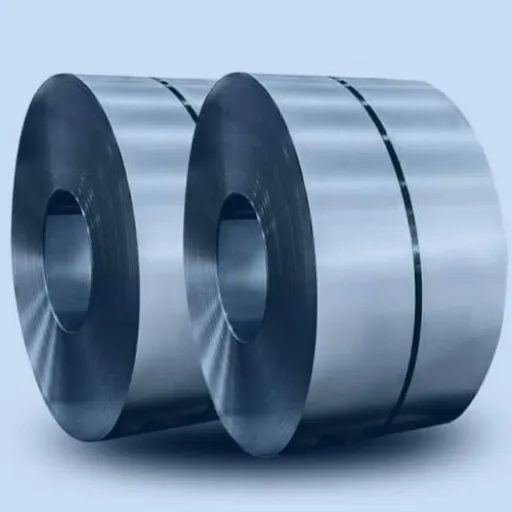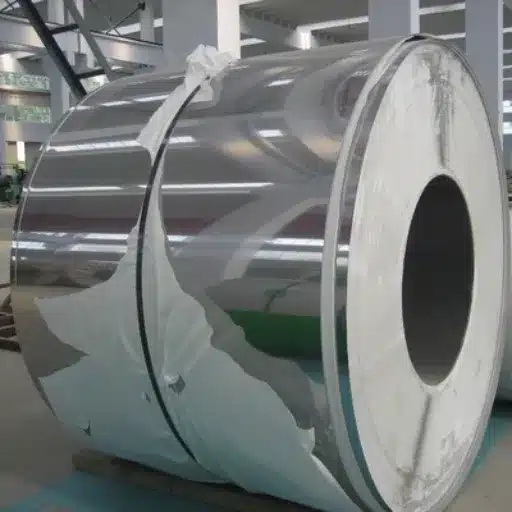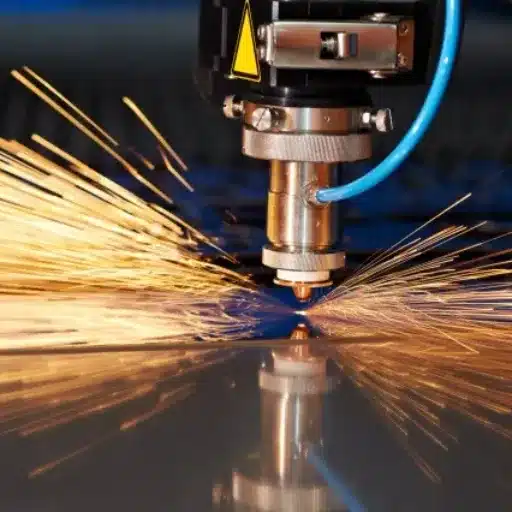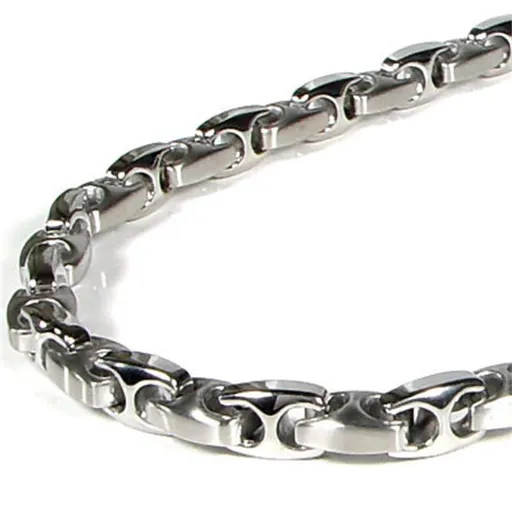When we talk about acquiring a new piece of jewelry, the most common materials are either stainless steel or sterling silver. Both materials have come to a high level of popularity, however, they have marked differences that cater to separate needs and preferences. This post aims to dichotomize both stainless steel and sterling silver, considering their durability, appearance, cost, maintenance, allergy issues, and safety concerns. With the help of the provided information within this post, you will know which material best fits your aesthetic, lifestyle, and most importantly, your budget. With that being said, let’s analyze the pros and cons of each material so you have all the information you need before making the purchase.
What are the Key Differences Between Stainless Steel and Sterling Silver?
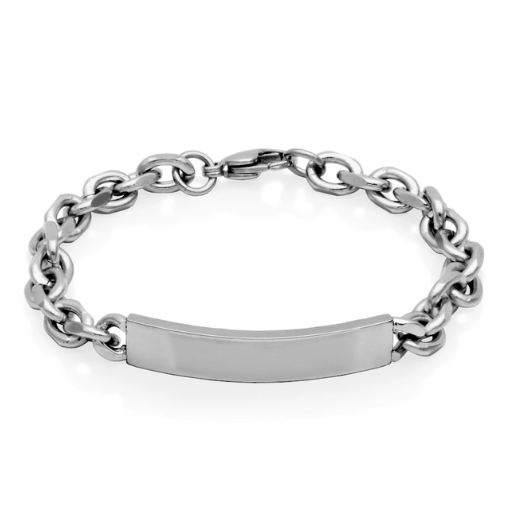
Durability
Wearing any pieces of jewelry made from stainless steel is great due to its high durability against scratches, tarnish, and corrosion. Environments that are demanding and require stainless steel jewelry to be worn on a daily basis? No problem! Sterling silver does on the other hand is softer, and beautiful, which as a result makes it prone to scratches and tarnishing over extended periods of time. Because of this, sterling silver requires more care.
Appearance
Quite a few prefer timeless aesthetics, and sterling silver indeed offers that along with a bright look. Polished too. Stainless steel has a more modern and sleek appearance than sterling steel, which makes it less shiny compared to stainless steel.
Cost
Stainless steel has one of the most budget-friendly prices associated with it, further deeming it more affordable than sterling steel. With a higher perceived value of sterling silver, it being a precious metal, makes stainless steel a no-brainer for those low on budget.
Maintenance
Stainless steel wins here too. With almost no maintenance needed to look new, cleanness is a breeze. Just like sterling silver though, it requires regular cleaning and polishing to maintain its shininess while preventing tarnishing.
Allergy Concerns
Sterling silver, with its high allergy-inducing alloying metals, makes it hard to wear for quite a few. At least higher quality .925 silver won’t cause unneeded troubles. While usually hypoallergenic stainless steel can cause worries due to the nickel content present in some alloys for sensitive individuals.
Understanding the Composition of Stainless Steel and Sterling Silver
Elements like nickel or molybdenum can also be added for further strength and durability, making the alloy perfect for use in many appliances. An example would be Sterling Silver, which is an alloy of 92.5% pure silver and 7.5% copper or other metals to provide strength, as pure silver is too soft for most practical uses. Both materials have unique characteristics, but their composition is why stainless steel less prone to tarnish and wear, while sterling silver has a distinct, brilliant shine. The key difference is that stainless steel incorporates chromium, which acts as a corrosion resistance, while the alloy retains iron and carbon for its base.
How Does Durability Compare in Steel vs Sterling Silver?
Stainless steel outlasts sterling silver by far when it comes to durability due to sterling silver’s propensity to wear, tarnish, and corrode. This is due to sterling silver containing softer alloys. Unlike stainless steel, which has higher proportions of hardened alloys such as chromium, forming a protective oxide layer, making it stainless, sterling silver is tarnished and scratched over time due to moisture and sulfur present in the air.
Key Technical Parameters:
- Stainless Steel:
- Hardness (Mohs scale): 5.5–6.3
- Tarnish Resistance: Excellent
- Corrosion Resistance: High (due to chromium content)
- Strength: Very high acceptable tensile strength, ideally suited for heavy-duty operations
- Sterling Silver:
- Hardness (Mohs scale): 2.5–3
- Tarnish Resistance: Moderate (requires polishing and care)
- Corrosion Resistance: Low (susceptible to tarnish and environmental factors)
- Strength: Not as high an acceptable tensile strength, most suitable for showpieces and lightweight applications
As such, in cases that require prolonged exposure to stress, stainless steel is better suited. Ornamental and traditional applications where aesthetic appeal is prominent are best served with sterling silver instead.
Does Stainless Steel Tarnish Compare to Sterling Silver?
Because of the chromium present in stainless steel, it is very difficult to tarnish; the chromium creates an oxide layer on the surface that protects against corrosion and oxidation. Typically, stainless steel contains at least 10.5% chromium, which preserves its value in changing environmental circumstances. Also, stainless steel alloys like 304 or 316 are especially known for their anti-corrosive properties; 316 stainless steel is even better because of the molybdenum it contains.
Sterling silver, in contrast, is much easier to tarnish. When exposed to sulfur or hydrogen sulfide in the air, it tarnishes, creating a black layer of silver sulfide on top. Made from 92.5% silver and 7.5% other metals (usually copper), sterling silver does not have the built-in defense features of stainless steel and needs regular cleanings and polishings to remain presentable.
The Following Distinctive Factors Were Examined:
- Stainless Steel (304/316):
- Chromium Content: 10.5–18%
- Corrosion Resistance: High (especially in grade 316) due to Molybdenum.
- Maintenance: Little to no upkeep required.
- Performance in Severe Conditions: Exceeds Expectations.
- Sterling Silver:
- Silver Content: 92.5%
- Tarnish Resistance: Poor (needs constant polishing).
- Exposure to Sulfide Gases: Greatly Increases Risk.
- Maintenance: Excessive.
In short, sterling silver is far more delicate and treasured for its exquisite appearance and shine, requiring constant upkeep to avoid oxidation, while stainless steel is far more adept at withstanding tarnishing and maintaining its look over prolonged periods and use.
How Do Sterling Silver Jewelry and Stainless Steel Jewelry Affect Sensitive Skin?
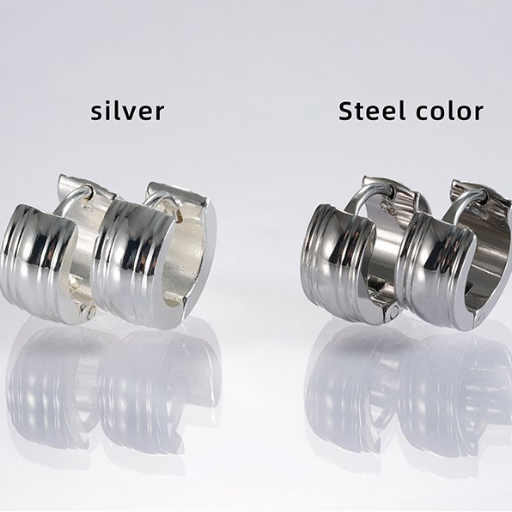
Jewelry made from sterling silver is usually suitable for sensitive skin, especially if the alloy used is of good quality and free from nickel. Nevertheless, those with an allergy to metals may still have an adverse reaction if there is a hint of nickel in the silver or if the worn piece has some tarnish on its surface. Surgical stainless steel jewelry is hypoallergenic and does not cause any irritation to the skin. Because surgical stainless steel is nonreactive, doesn’t contain nickel, and is nonallergenic, it is a better alternative than silver for people with sensitive skin or metal allergy.
Is Surgical Steel a Better Option for Sensitive Skin?
Yes, surgical steel is often a better choice for sensitive skin. This is owing to surgical steel of the type 316L or 316LVM, which is hypoallergenic and made with considerations for medical usage and biocompatibility. These grades of steel have very low amounts of nickel, which is trapped within the alloy’s structure and thus reduces the chances of causing an allergy. In addition, surgical steel has good resistance to corrosion and having a smooth finish, free from burrs or tarnished edges which could cause further vexation to the body. All these mentioned properties make surgical steel suitable for people who suffer from sensitivities to metal or for those looking for jewelry that is skin-friendly and durable.
Nominal Values of Surgical Steel (as in 316L, 316LVM):
- Nickel Content: ≤ 0.03% (securely bound in the alloy, meaning bound to the steel, will not be able to escape, and also means it will not be able to be easily released)
- Corrosion Resistance: Strong, due to chromium (16-18% present in alloy)
- Durability: Strong and resistant to scratches and or damages
- Biocompatibility: Of medical grade, meaning it can be in prolonged contact with skin without causing adverse effects
- Surface Finish: Polished smooth, meaning it will not irritate the skin
Why Stainless Steel is Hypoallergenic and Sterling Silver’s Impact
The near absence of nickel release in stainless steel hypoallergenic properties is due to the firm bonding of the nickel within the alloy structure, hence stainless steel’s hypoallergenic properties. Medical-grade stainless steel, like 316L and 316LVM, is manufactured to contain lower levels of allergens, making them ideal for prolonged exposure to skin contact. The 316L and 316LVM contain high amounts of chromium (16-18%), which assists in the formation of an additional protective oxide layer, thus enhancing resistance to corrosion or irritation of the skin. The polished surface enhances skin compatibility by reducing the chances of skin reactions. As for sterling silver, it is an alloy that is known to contain around 7.5% copper, which has the potential to oxidize or tarnish, resulting in skin sensitivity and discoloration over time. Hence, while sterling silver is aesthetically beautiful, biocompatibility is not as prominent as that of surgical-grade stainless steel, which is more appropriate for sensitive skin.
Why Choose Sterling Silver Jewellery Over Stainless Steel Jewellery?
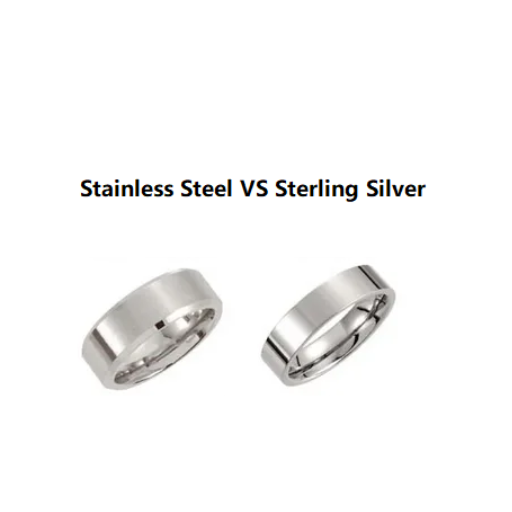
Recall the look of smooth sterling silver jewelry? Their charm and aptitude glimmered with tactful sophistication, drawing my keen attention. This is because my father finds what’s timelessly elegant. And with my father’s taste for high-end jewelry, I see why sterling silver looks dynamic, as it is durable and lightweight. Its glittering finish augments the appeal of any outfit. And let’s not forget how intricate its designs can be. Looking for something extraordinary? Or perhaps laid back? Either option is are game when opting for sterling silver.
The Aesthetic Appeal of Sterling Silver
In pursuit of something that adds to the value of precious metal? Well, sterling silver adornments fit the criteria like a glove. Also, having the capacity to withstand polish without losing shape renders superb durability. This makes sure sterling silver is always a favored piece among people’s reach. For those who share a fascination with antique pieces, sterling silver can be effortlessly restored to its gleaming, shining beauty to ensure these treasured possessions survive the years. This also speaks for long-lasting beauty, coupled with the polish added.
Value and Investment: 925 Sterling Silver vs Stainless Steel
Both sterling silver and stainless steel have their distinct advantages. However, I believe that sterling silver stands out for its timeless appeal and investment potential. Being a precious metal, sterling silver typically appreciates with time, especially in heirloom pieces, which are of deep sentimental value. In comparison, stainless steel holds great durability and is low-maintenance, but lacks the same intrinsic and monetary value. For me, sterling silver takes the trophy as it beautifully blends craftsmanship and potential long-term value, making it a versatile and meaningful choice.
The Tarnish Factor: Silver vs Stainless Steel
With regards to tarnish, sterling silver is more likely to tarnish than stainless steel because of sterling silver’s copper content. The copper within sterling silver reacts with sulfur in the air, creating a dark layer over time. On the other hand, stainless steel contains chromium, which makes the item highly resistant to tarnish and corrosion because chromium helps form a protective oxide layer. For me, the stainless steel option versus the sterling silver all comes down to maintenance and aesthetic appeal. The warm luster of sterling silver offers antique charm while stainless steel provides low-maintenance durability. Both options are appealing, although here are the key technical parameters:
Sterling Silver (92.5% Silver):
- Requires polishing and careful storage to avert oxidation.
- Contains copper, which triggers tarnishing.
Stainless Steel (typically 18/10 or 304 grade):
- Contains 18% chromium, which assists with corrosion.
- Provides virtually maintenance-free and highly durable options.
In the end, despite the susceptibility to tarnish, I prefer choosing sterling silver as it offers endless beauty combined with elegance and legacy.
Is Stainless Steel Jewelry More Durable Than Sterling Silver Jewelry?
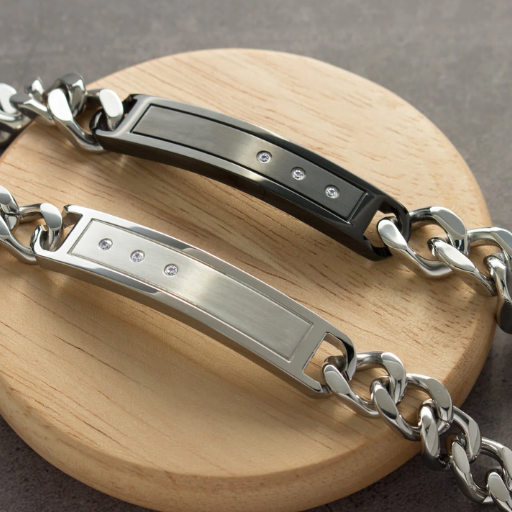
It is well known that stainless steel jewelry is more durable than sterling silver jewelry. Thanks to the chrome in stainless steel, it is much more resistant to scratches, corrosion, and tarnishing, allowing it to be worn every day. On the contrary, sterling silver is softer and more susceptible to damage. Both metals have their advantages when it comes to durability, but in the case of long-term sustainability and maintenance, stainless steel takes the crown over sterling silver.
Everyday Wear: Durability of Stainless Steel
In my experience, stainless steel is the easiest to maintain and most durable option for everyday use. Unlike sterling silver, it doesn’t tarnish, corrode, or get scratched easily, which relieves me from worrying about constant cleaning. If you are someone looking for a reliable option for everyday wear, stainless steel is surely the long lasting and low maintenance selection.
Long-Term Care and Maintenance for Sterling Silver Jewellery
Wiping off some dust and polishing your sterling silver jewelry is one of the most effective ways to maintain them. It is best to store it in an anti-tarnish bag or with them so that they do not tarnish. Household chemicals, chlorine, and perfumes can cause damage to them so it is ideal not to expose them.
Over time, sterling silver jewelry does tarnish. This is the result of the jewelry being left exposed to not only air but to moisture and some chemicals as well. Them being exposed to copper can greatly decrease their strength so storing them in an airtight container is a great alternative. Additionally, buffing them with a soft cloth helps greatly as coarse cloths are usually damaging. A combination of warm water with mild soap is also helpful, but it must be rinsed properly.
Comparing Metal Alloys in Stainless Steel and Sterling Silver
Stainless steel and sterling silver are two precious metal alloys which have different attributes making them ideal for different purposes. Sterling silver is primarily used in jewelry. It includes a minimum of 92.5% pure silver with 7.5% of another metal, typically copper, added to improve its durability. This allows sterling silver to withstand some degree of force while still being soft and shiny. While sterling silver does tarnish quickly than stainless steel, it can be restored through various methods.
Stainless steel is primarily made of Iron, which has a minimum of 10.5% chromium, in combination with nickel, manganese, and carbon. This alloy provides enormous strength and durability along with exceptional resistance to wear and corrosion. One of the most commonly used stainless steels is 304 stainless steel, which consists of around 18% chromium and 8% nickel. Another example is 316 stainless steel, which includes 16% chromium, 10% nickel, and 2-3% molybdenum for enhanced protection against harsh environments.
Owing to stainless steel’s strength and low maintenance, it is favored in industrial equipment, kitchen tools, and even jewelry. Meanwhile, sterling silver is beloved for its aesthetic beauty and traditional significance in fine jewelry, decorative pieces, and family heirlooms. The final product’s appearance, needed function, durability, desired budget, and material determine the choice between these two metals.
What are the Cost Differences Between Stainless Steel vs Sterling Silver?
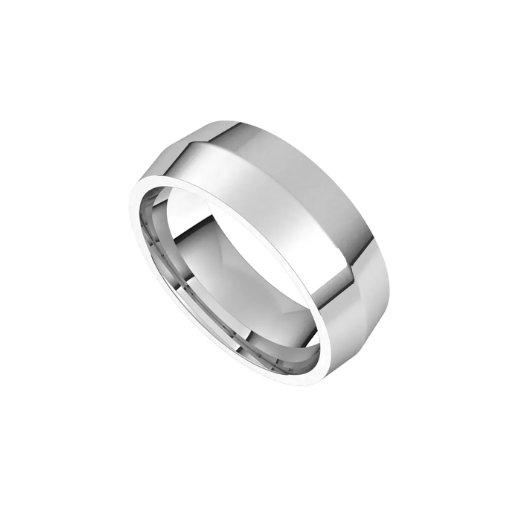
Stainless steel is also slightly more economical when compared to sterling silver. This price difference stems from the lower cost ascribed raw materials and it simpler to manufacture. Moreover, sterling silver is incurs greater costs because it contains 92.5% pure silver. Additionally, sterling silver often involves more intricate crafting and carries a premium for its aesthetic and traditional value. Those prioritizing budget best choose stainless steel, while those seeking luxury and refinement need sterling silver.
Analyzing the Price: 925 Sterling Silver vs Steel Jewellery
To explore the disparities in pricing between jewelry made of 925 sterling silver and steel, the following aspects need to be addressed sequentially:
- Material Composition
- 925 Sterling Silver: Composed of 92.5% pure silver and 7.5% other metals (copper most likely).
- Steel: An alloy of iron and carbon, along with various other elements, forms steel. Chromium (10.5% or more) may be added to stainless steel to prevent corrosion.
- Cost of Raw Materials
- Precious metals like silver have a higher market value than the components that make up steel alloys.
- This alloy is less expensive due to its abundant raw materials and less expensive extraction processes.
- Durability
- A type of sterling silver jewelry is likely to tarnish and thus require maintenance, which increases costs in the long run.
- This type of steel is easily maintained and corrosion resistant, making it durable.
- Craftsmanship
- Due to the use of traditional art forms, sterling silver jewelry often has more elaborate designs than modern models.
- Jewelry made from steel is modern and cost-friendly due to cheap manufacturing.
- Aesthetic appeal
- Regarding silver, his name is associated with elegance, and hence jewelry made from this metal carries a value.
- Unlike other notions of sterling silver, jewelry made from steel is modern and minimalistic but does not carry notions of luxury associated with silver.
Upon assessment of these parameters, it’s clear to see that the elevated pricing of sterling silver is justified by its material value, craftsmanship, and beauty. On the other hand, steel jewelry drives demand among more economically-minded clientele who store value in practicality and durability.
Is Stainless Steel a More Affordable Option?
Certainly, stainless steel is a lot more budget-friendly than sterling silver. The lower cost of stainless steel comes from its relative availability, along with lower production costs, while sterling silver’s higher price comes from its traditional appeal and material value. The following parameters should also be noted as relevant key technical criteria:
- Material Cost: The primary constituents of stainless steel are iron, plus chromium and nickel, all far more abundant and cheaper than silver.
- Durability: The metal has low maintenance requirements because it is prone to scratches, corrosion, and tarnishing.
- Weight: The fact that stainless steel is denser than sterling silver makes jewelry from it feel heavier.
- Appearance: While stainless steel looks good, it does not possess the warmth and richness emanating from sterling silver’s polished surface.
Stainless steel jewelry is appealing to those looking for affordable, somewhat durable options. Still, those valuing craftsmanship and aesthetics will likely choose sterling silver despite its steep price.
References
- Stainless Steel vs Sterling Silver – What’s the Difference? – Discusses durability, corrosion resistance, and lifespan differences.
- Differences between sterling silver and stainless steel? – Highlights the softness, tarnishing, and maintenance of sterling silver compared to stainless steel.
- Stainless Steel vs. Sterling Silver – Explores differences in composition, durability, versatility, and affordability.
Frequently Asked Questions (FAQ)
Q: What are the main differences between sterling silver and stainless steel for jewelry?
A: The main differences between sterling silver and stainless steel for jewelry include composition, maintenance, and cost. Sterling silver is composed of 92.5% silver and 7.5% other metals, typically copper, making it a precious metal that requires regular cleaning to maintain its shine. Stainless steel, particularly 316l stainless steel, is an alloy that doesn’t tarnish and is less expensive than sterling silver, making it a durable and cost-effective choice.
Q: Is sterling silver more expensive than stainless steel?
A: Yes, sterling silver is more expensive than stainless steel. Sterling silver is valued as a precious metal, whereas stainless steel, including 316l stainless steel, is more affordable due to its composition and widespread availability.
Q: Why might someone choose stainless steel over sterling silver for jewelry?
A: Stainless steel offers several benefits over sterling silver, including its resistance to tarnishing, durability, and lower cost. These are some of the reasons why stainless steel is a popular choice, especially for men’s jewelry and those looking for low-maintenance options.
Q: How does the maintenance of sterling silver compare to stainless steel?
A: Sterling silver requires regular cleaning to prevent tarnish and maintain its luster, whereas stainless steel doesn’t tarnish and requires minimal maintenance. This makes stainless steel a more convenient option for those seeking low-maintenance jewelry.
Q: What’s the difference in the appearance of sterling silver and stainless steel?
A: Sterling silver has a bright, shiny finish that is characteristic of silver jewelry, while stainless steel has a more subdued, metallic finish. Both can be polished, but sterling silver may lose its shine over time if not properly maintained.
Q: Are there specific types of stainless steel used for jewelry?
A: Yes, 316l stainless steel is a common type used for jewelry due to its high resistance to corrosion and tarnish, making it ideal for everyday wear.
Q: Is sterling silver a good choice for people with metal allergies?
A: Sterling silver may cause allergic reactions in some individuals due to the copper content in its alloy. In contrast, stainless steel, especially surgical-grade 316l stainless steel, is often hypoallergenic and a better choice for those with sensitive skin.
Q: Can sterling silver be combined with other metals like gold and platinum?
A: Yes, sterling silver can be combined with other precious metals like gold and platinum in jewelry designs, offering a variety of styles and aesthetic options. However, combining metals can also affect the overall cost and maintenance of the piece.
Q: Are there any reasons why stainless steel might not be suitable for certain jewelry designs?
A: While stainless steel is durable and low-maintenance, it may not be suitable for intricate designs that require the malleability of softer metals like sterling silver or gold. Additionally, the weight and color of stainless steel might not match every design preference.


